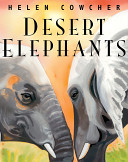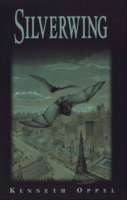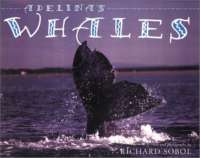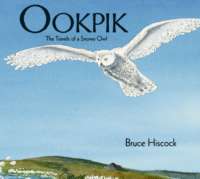
Each year the desert elephants of Mali, West Africa, travel a 300-mile path to search for water. They peacefully pass through the lands of the Tuareg, Dogon, and Fulani people while following the longest migration route of any elephant in the world.

Each year the desert elephants of Mali, West Africa, travel a 300-mile path to search for water. They peacefully pass through the lands of the Tuareg, Dogon, and Fulani people while following the longest migration route of any elephant in the world.

Fifteen-year-old Mara leaves her mother and their Puerto Rican home to live in the barrio of New York with her father, feeling torn between the two cultures in which she has been raised.
Esmeralda Santiago’s story begins in rural Puerto Rico, where her childhood was full of both tenderness and domestic strife, tropical sounds and sights as well as poverty. Growing up, she learned the proper way to eat a guava, the sound of tree frogs in the mango groves at night, the taste of the delectable sausage called morcilla, and the formula for ushering a dead baby’s soul to heaven. As she enters school we see the clash, both hilarious and fierce, of Puerto Rican and Yankee culture. When her mother, Mami, a force of nature, takes off to New York with her seven, soon to be eleven children, Esmeralda, the oldest, must learn new rules, a new language, and eventually take on a new identity.
Migrant farmers and their families represent an ever-growing body of laborers around the world. They are used as cheap labor but most of them are not allowed to settle down, integrate into their host countries and become citizens with full rights. This is, of course, devastating to their children.
Among these groups are the Mennonites from Mexico, who originally went to Mexico from Canada in the 1920s. They speak “Low German” and though many are poor, they are an important part of the Mexican farm community. Because of free trade and the fact that Mexican farmers cannot compete with highly subsidized US farmers, they have been forced to come back to Canada — as migrant workers — in order to survive. Anna is the child of Mennonites from Mexico, who have come north to harvest fruit and vegetables. Sometimes she feels like a bird, flying north in the spring and south in the fall, sometimes like a jackrabbit in an abandoned burrow, since her family occupies an empty farmhouse near the fields, sometimes like a kitten, as she shares a bed with her sisters. But above all Anna wonders what it would be like to be a tree rooted deeply in the earth, watching the seasons come and go, instead of being like a “feather in the wind.”
A very rare pitacoche bird falls in love with a swallow and plucks his colorful feathers to transform dry, barren San Juan Capistrano into a haven of flowers and flowing water, which the swallows can easily find when returning from their annual migration.

Shade is the runt of his Silverwing bat colony, determined to prove himself on the perilous migration to Hibernaculum. During a fierce storm, he loses the others and soon faces the most incredible journey of his short life.

Adelina is a ten-year-old girl who lives in a quiet fishing village in Baja California, Mexico. Adelina has some very special friends-the gray whales-that come every year to spend the winter months and give birth to their calves in the protected lagoon near her home. This beautifully photographed photo-essay introduces young readers to a very special way of life, offering insights into the world of these giant mammals of the sea. Text and photographs by Richard Sobol.

Here is the story of one snowy owl’s first year and its struggle to survive. Fed by his parents, Ookpik, which means snowy owl in the Inuit language, grows quickly in the short Arctic summer. By autumn he has learned to hunt on his own, but prey is scarce on the tundra that year. The owl’s instincts tell him that he must leave this land or starve. Ookpik flies south, over the great forests of Canada, and finally lands in the United States, always searching for food and a winter hunting ground.
With vivid watercolor illustrations, Bruce Hiscock depicts the changing landscape, from the treeless Arctic of Baffin Island to the dairy country of eastern New York. There, Ookpik settles for the winter, much to the delight of bird watchers. An author’s note offers additional details on the life of the snowy owl.
Although she does not know why or how, a small creepy-crawly bug is certain that she must make her way to Mexico.